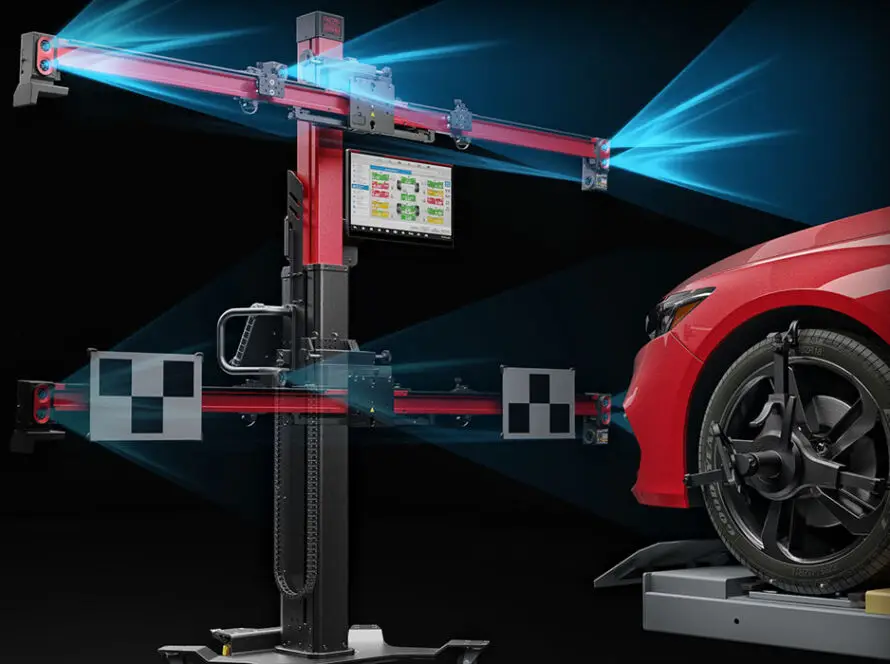Advanced Driver Assistance Systems (ADAS) are a critical component of modern automotive safety, enhancing driver awareness and reducing accidents. These systems rely on a variety of technologies, environmental conditions, and regulatory frameworks to function effectively. Understanding the factors that influence ADAS performance and development is essential for automakers, repair technicians, and consumers alike. Here are the key factors that shape ADAS technology.
1. Sensor and Hardware Technology
ADAS relies on an array of sensors, cameras, radar, and LiDAR (Light Detection and Ranging) to detect obstacles, lane markings, pedestrians, and other vehicles. The quality and accuracy of these components significantly impact system performance.
-
Radar Sensors: Used for adaptive cruise control, blind-spot monitoring, and collision avoidance, radar sensors must be finely tuned to detect objects at various speeds and distances.
-
Cameras: High-resolution cameras are essential for lane-keeping assistance, traffic sign recognition, and pedestrian detection.
-
LiDAR: While not present in all ADAS-equipped vehicles, LiDAR enhances object detection and environmental mapping, improving system accuracy.
2. Software and Artificial Intelligence (AI)
Software algorithms process the data collected from ADAS sensors to make real-time driving decisions. The efficiency of ADAS depends on:
-
Machine Learning Models: AI-based models continuously improve through data collection, enhancing the system’s ability to recognize hazards.
-
Sensor Fusion: Combining data from multiple sources improves decision-making accuracy and reduces false alerts.
-
Over-the-Air Updates: Automakers can update ADAS software remotely, ensuring continuous improvements without requiring a visit to a dealership.
3. Road and Environmental Conditions
The effectiveness of ADAS varies depending on the surrounding environment. Some key influences include:
-
Weather Conditions: Fog, heavy rain, and snow can obstruct cameras and radar, reducing system reliability.
-
Road Infrastructure: Poorly marked lanes, faded road signs, and inconsistent traffic patterns can lead to ADAS errors.
-
Urban vs. Highway Driving: ADAS performs differently in urban environments due to frequent stops, pedestrian crossings, and unpredictable traffic behavior.
4. Calibration and Maintenance
Proper calibration is essential to maintain ADAS accuracy, especially after windshield replacements, sensor realignments, or suspension modifications.
-
OEM Specifications: Each manufacturer requires specific calibration procedures to ensure proper alignment of cameras and radar sensors.
-
Workshop Equipment: Advanced calibration tools are necessary to adjust ADAS sensors accurately.
-
Regular Maintenance: Dust, debris, and wear can impact sensor performance, requiring routine inspections.
5. Regulatory and Safety Standards
Governments and safety organizations set regulations that influence ADAS adoption and development.
-
Mandates for Safety Features: Many regions require features like Automatic Emergency Braking (AEB) and Lane Departure Warning (LDW) as standard.
-
Testing and Compliance: Vehicles must meet strict safety certification tests before ADAS features can be implemented in production models.
-
Data Privacy Laws: ADAS collects and processes significant amounts of driver data, which must comply with privacy regulations.
6. Vehicle Design and Integration
The placement of sensors and cameras within a vehicle affects ADAS performance.
-
Aerodynamics and Body Structure: Vehicle design influences how sensors function, particularly for front-facing radar and cameras.
-
Display and User Interface: Clear and intuitive driver alerts and warnings improve usability and response times.
-
Compatibility with Other Systems: ADAS must integrate seamlessly with braking, steering, and powertrain control systems.
7. Consumer Awareness and Training
ADAS effectiveness depends not only on technology but also on how well drivers understand and use the system.
-
Driver Education: Many drivers are unaware of the limitations of ADAS, leading to overreliance or misuse.
-
User Customization: Some ADAS features allow driver adjustments, but incorrect settings may reduce effectiveness.
-
Warnings and Feedback: Clear and well-designed alerts ensure drivers respond appropriately to ADAS warnings.
8. Connectivity and Infrastructure
Future ADAS advancements depend on vehicle-to-everything (V2X) communication, where cars interact with traffic signals, road signs, and other vehicles.
-
5G and IoT Integration: Faster data transmission enhances real-time decision-making for ADAS features.
-
Smart City Development: The growth of connected infrastructure can improve ADAS performance, particularly in urban environments.
-
Cloud-Based Data Processing: Centralized data sharing can help vehicles learn from collective driving patterns and road conditions.
9. Cost and Market Trends
ADAS adoption is influenced by the cost of implementation and consumer demand.
-
Production Costs: Advanced sensors and software development contribute to vehicle pricing.
-
Aftermarket Solutions: Some ADAS features can be added through third-party systems, increasing accessibility for older vehicles.
-
Consumer Expectations: Growing awareness of vehicle safety has led to increased demand for ADAS-equipped cars.
10. Future Technological Developments
ADAS continues to evolve with advancements in automation and artificial intelligence.
-
Autonomous Driving Progression: ADAS serves as the foundation for fully autonomous vehicles.
-
Enhanced Machine Vision: Improved object recognition and environmental mapping will make ADAS more reliable.
-
Self-Learning Systems: Future ADAS will adapt to driver behavior, personalizing assistance features.
Conclusion
ADAS is shaped by a combination of technological, environmental, regulatory, and consumer factors. As technology advances, ADAS will become more sophisticated, paving the way for safer roads and a gradual transition toward autonomous vehicles. Understanding these influencing factors helps drivers, manufacturers, and service providers ensure that ADAS remains reliable and effective in enhancing vehicle safety.




